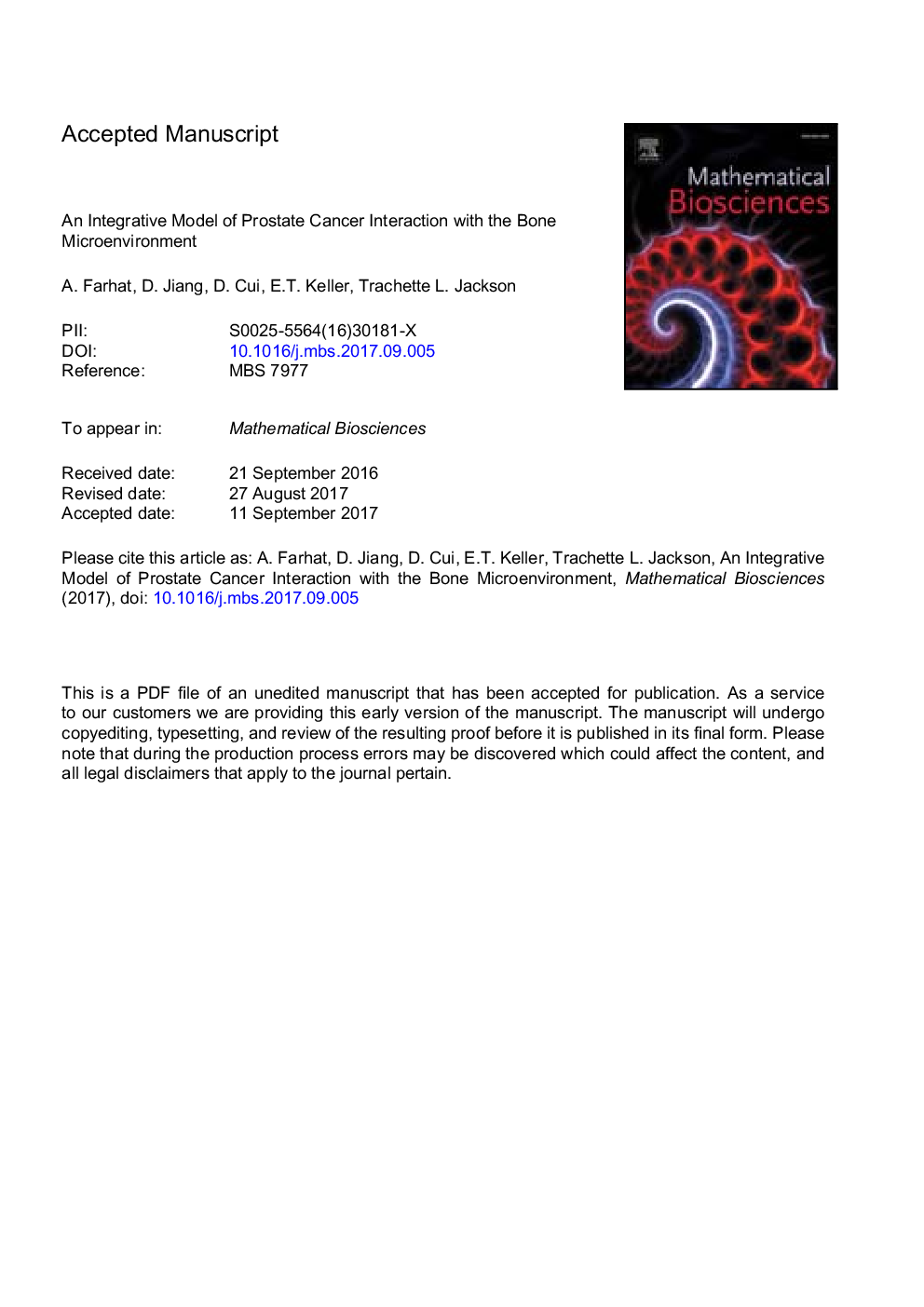| Article ID | Journal | Published Year | Pages | File Type |
|---|---|---|---|---|
| 5760358 | Mathematical Biosciences | 2017 | 38 Pages |
Abstract
Despite advanced efforts in early diagnosis, aggressive surgical treatment, and use of targeted chemotherapies, the prognosis for many cancers is still dismal. This emphasizes the necessity to develop new strategies for understanding tumor growth and metastasis. Here we use a systems approach that combines mathematical modeling and numerical simulation to develop a predictive computational model for prostate cancer and its subversion of the bone microenvironment. This model simulates metastatic prostate cancer evolution, progressing from normal bone and hormone levels to quantifiable diseased states. The simulations clearly demonstrate phenomena similar to those found clinically in prostate cancer patients. In addition, the major prediction of this model is the existence of low and high osteogenic states that are markedly different from one another. The existence and potential realization of these steady states appear to be mediated by the Wnt signaling pathway and by the effects of PSA on TGF-β, which encourages the bone microenvironment to evolve. The model is used to explore several potential therapeutic strategies, with some potential drug targets showing more promise than others: in particular, completely blocking Wnt and greatly increasing DKK-1 had significant positive effects, while blocking RANKL did not improve the outcome.
Related Topics
Life Sciences
Agricultural and Biological Sciences
Agricultural and Biological Sciences (General)
Authors
A. Farhat, D. Jiang, D. Cui, E.T. Keller, T.L. Jackson,
